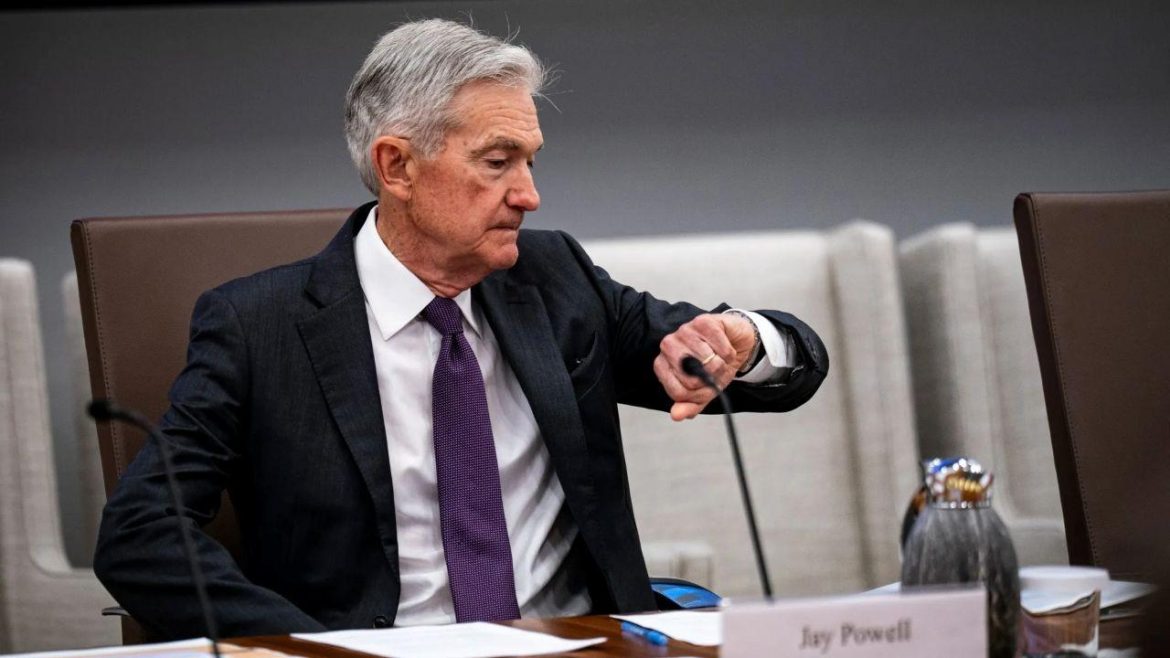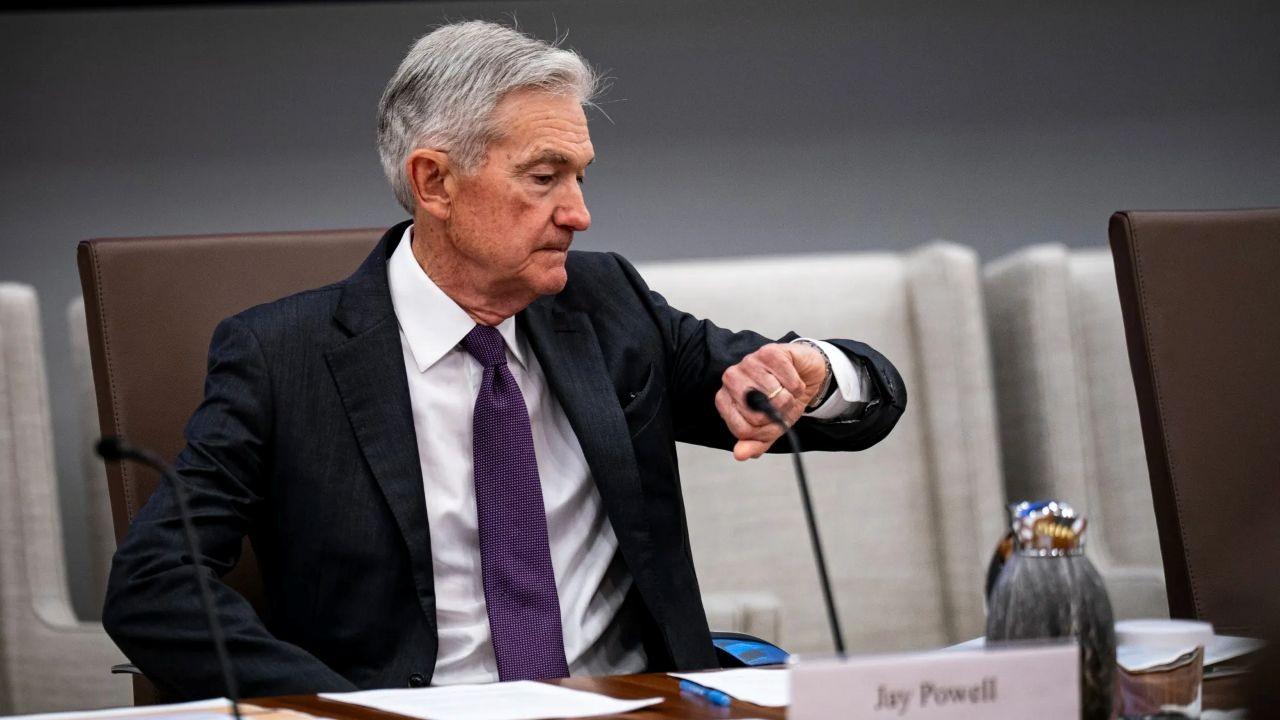The Fed’s Rate Hold: A Delicate Dance Between Inflation and Growth
The Federal Reserve’s decision to maintain the current short-term interest rate range of 4.25%-4.50% marks a critical juncture in the central bank’s monetary policy strategy. This fifth consecutive hold, while expected, was not without internal strife, as evidenced by the first double dissent in over three decades. Governors Michelle Bowman and Christopher Waller’s votes against the majority signal a growing rift within the Fed’s ranks, reflecting broader economic uncertainties and divergent views on the path forward.
The Fed’s Tightrope Walk: Inflation vs. Growth
The Fed’s decision to maintain the status quo reflects a careful balancing act between two competing priorities: taming inflation and fostering economic growth. Inflation, though showing signs of moderation, remains above the Fed’s 2% target. Chairman Jerome Powell has consistently advocated for a “wait-and-see” approach, emphasizing the need to assess the full impact of previous rate hikes before making further adjustments. The concern is that premature rate cuts could reignite inflationary pressures, undermining the progress made thus far.
However, the Fed is also acutely aware of the potential for higher interest rates to dampen economic activity. With recession fears lingering, policymakers are keen to avoid policies that could precipitate a significant downturn. This delicate dance is further complicated by external factors, including global economic uncertainty and the potential impact of trade policies. The Fed’s challenge is to find the right balance between these competing objectives, ensuring that monetary policy supports both price stability and full employment.
Dissenting Voices: A Sign of Evolving Perspectives
The dissenting votes of Governors Bowman and Waller highlight a growing divergence within the Fed regarding the appropriate course of action. Both appointees of former President Trump, they have consistently expressed concerns about the potential for high interest rates to harm the economy. Their dissent suggests a belief that the risks of holding rates steady outweigh the risks of a modest rate cut.
Several factors could be driving this viewpoint. Bowman and Waller may believe that inflation is already on a sustainable downward trajectory and that the economy needs a boost to maintain momentum. Alternatively, they might be more concerned about the potential for a recession and see a rate cut as a necessary preemptive measure. The fact that these are the first dissents of the year is significant, as it suggests that a larger debate is unfolding within the Fed concerning the overall health of the economy.
External Pressures: Political and Economic Crosswinds
The Fed’s decision-making process is further complicated by external pressures, most notably from former President Trump, who has repeatedly called for lower interest rates. These political attacks, coupled with a public campaign to replace Powell, add a layer of political complexity to the Fed’s deliberations. The Fed, as an independent institution, must navigate these political crosswinds while remaining focused on its dual mandate of price stability and full employment.
Beyond political pressure, the Fed is also grappling with the economic uncertainties created by tariffs. Chairman Powell has acknowledged that the central bank is closely monitoring how tariffs impact inflation data, amid concerns that higher goods prices could keep inflation above the 2% target. The influence of tariffs on inflation is, at this point, only speculative. There is a lot of uncertainty as to how tariffs will impact the economy and inflation. This uncertainty adds another layer of complexity to the Fed’s decision-making process, as policymakers must weigh the potential impact of tariffs on both inflation and economic growth.
Implications and Future Outlook
The Fed’s decision to hold rates steady, coupled with the internal dissent, has several important implications for the economy and financial markets.
Uncertainty and Market Volatility
The lack of a clear consensus within the Fed creates uncertainty about the future path of monetary policy. This uncertainty could ripple through financial markets, affecting investment decisions and economic activity. Market participants, accustomed to a more predictable Fed, may struggle to interpret the mixed signals emanating from the central bank. This could lead to increased market volatility, as investors adjust their portfolios in response to the evolving economic landscape.
Data Dependence and Policy Flexibility
The Fed’s emphasis on a “wait-and-see” approach means that future decisions will be heavily reliant on incoming economic data. Any surprises in inflation, employment, or economic growth could trigger a swift change in policy. This data dependence underscores the Fed’s commitment to flexibility, as policymakers remain open to adjusting their stance in response to new information. However, it also highlights the challenges of navigating an uncertain economic environment, where data can be volatile and subject to revision.
September Rate Cut in Doubt
The Fed offered no hints about a potential rate cut in September, suggesting that policymakers are in no rush to ease monetary policy. Whether a cut occurs will likely depend on the economic data released in the coming weeks. The Fed’s cautious approach reflects its desire to avoid premature action, ensuring that any policy changes are well-supported by the data. However, this caution also raises questions about the Fed’s willingness to act decisively in the face of economic headwinds.
The Road Ahead: Navigating Uncharted Waters
Looking ahead, the Fed faces a challenging task. It must navigate a complex economic landscape, balancing the need to curb inflation with the desire to support economic growth. The internal divisions within the Fed, coupled with external pressures, make this task even more difficult. The central bank must find a way to reconcile these competing priorities, ensuring that its policies are both effective and credible.
The Fed’s recent decision reveals a central bank at a crossroads. The internal dissent highlights the complexities and uncertainties surrounding the economic outlook, while external pressures add further challenges to policymaking. The coming months will be crucial in determining whether the Fed can successfully navigate these challenges and steer the economy towards a path of sustainable growth and price stability. The cracks in the foundation are now visible. Whether they widen into fissures or are skillfully mended remains to be seen. The world is watching to see what happens next.





